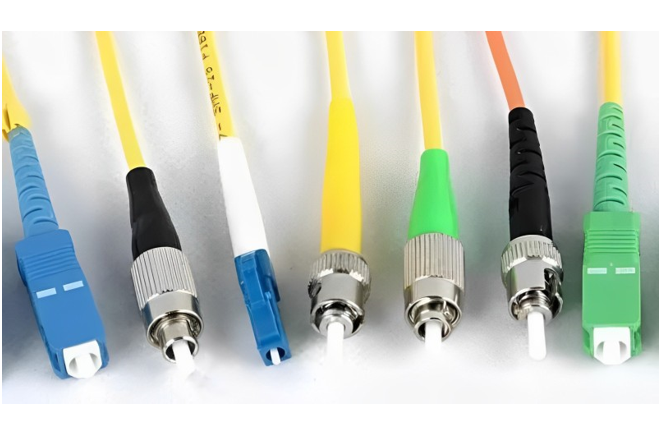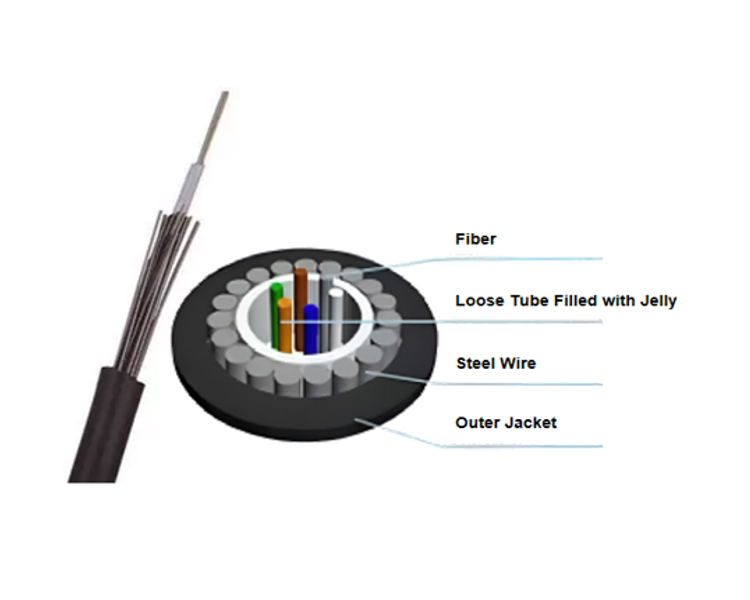Effectively arranging optical fiber optic patch cords in a cabinet is a critical aspect of maintaining a streamlined and organized network infrastructure. Proper arrangement not only enhances the overall aesthetics of the cabinet but also plays a crucial role in preventing signal interference and reducing the potential for connection errors. In this context, a well-thought-out strategy for organizing optical fiber optic patch cords within the cabinet is essential to promote efficiency, accessibility, and reliability in data transmission systems. This article delves into practical guidelines and best practices for the systematic arrangement of optical fiber optic patch cords, considering factors such as cable routing, spacing, and labeling for a well-organized and high-performing cabinet configuration.
1. The steps of managing fiber optic Patch Cord
Step 1: Identify the optical cross box and the data room, locating the optical splitter.
Step 2: Identify the optical splitter number.
Step 3: Find the optical splitter port configured on the work order.
Step 4: Locate the port accessing the user’s fiber optic cable core sequence.
Step 5: Hop from the optical splitter port to the user’s optical fiber cable port.
2. Basic Knowledge and Specifications of Fiber Optic Patch Cord
- Operations must adhere to principles within the ODF frame, optical cross box, a neat combined test cabinet, ensuring beautiful wiring, easy operation, and minimal space usage.
- Fiber patch cord length should be within the range of 500mm.
- Fiber patch cords with insufficient length should not be used, and flanges are not allowed to connect two segments of a patch cord.
- The curvature radius of each fiber optic patch cord should be greater than 400mm.
- General requirements for fiber walking
- For the optical fiber that is routed from the top, go down the outer side of the ODF rack, select the disk fiber column with the most suitable residual fiber cable amount, and route the fiber cable upward on the inside of the ODF rack, horizontally along the bottom edge of the ODM, and vertically upward to the corresponding terminal.
- One optical fiber patch cord is only allowed to go up once (along the outside of the ODF frame) and once (along the inside of the ODF frame) in the ODF frame, and one coil fiber column is used. It is forbidden to wrap , cross or hang between multiple coil fiber columns, that is, there is no fiber winding on the upper edge of each coil fiber column.
- Arrange and strap the optical fiber patch cords according to the site’s specific conditions as specified.
- All optical fiber patch cords must be laid within the ODF frame. Any occurrences of laying outside the frame or instances of flying wires are strictly prohibited.
- Super long optic fiber patch cords designated for emergency use should be suspended on the inner fiber plate following the established rules, ensuring they do not interfere with future fiber patch cords.
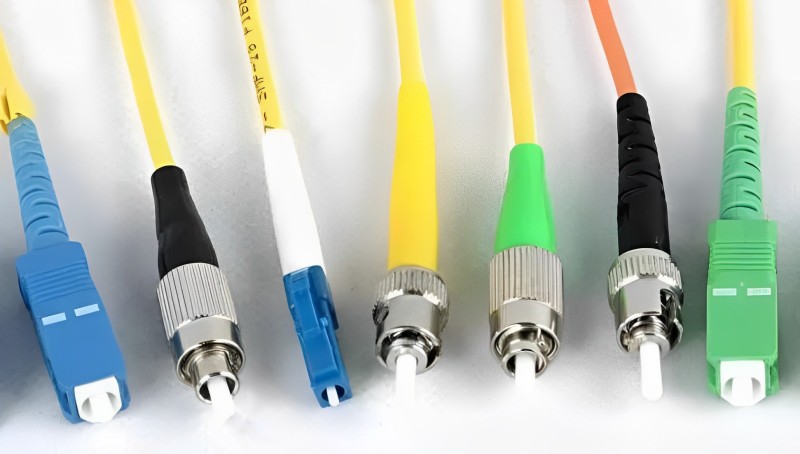
3. Fiber Optic Patch Cord Types, Uses, and Length Control
- Select the corresponding fiber optic patch cord (SC-SC, FC-FC, SC-FC) based on the flange head on the optical splitter and fiber splitter box.
- Purposes include connecting the remote fiber core of the ODF frame (FC interface), ODF rack and device interfaces (SC interface), and device interfaces (LC interface). These interfaces facilitate physical connections between ODF and ODF racks, between ODF racks and devices, and between devices.
- For patch cords from the optical splitter to the user’s fiber cable, control the residual length within 50cm, typically using 1m, 2m, 2.5m, or 3m tail fiber patch cords.
- ONU and the fiber optic terminal in the user fiber terminal box generally use a 50cm short fiber optic pigtail.
4. Management and Specification of Optical Fiber Patch Cord Labels
- All labels must be machine-labeled; handwriting is not allowed.
- Labels should be attached to both ends of the optical fiber patch cord in the equipment room, optical cross box, and corridor.
- Labels should have uniform standard length, conform to the clearance of terminal positions, and not be staggered.
- The front side displays the name of the optical path, and the back side contains the code and barcode, with the same orientation.
- Labels should sag along with the fiber optic pigtail and naturally face upwards.
5. Performing Necessary Optical Path Tests
After completing each section of the fiber optic patch cord, follow these test procedures:
- Use an optical power meter to test the 1490 wavelength of the beam splitter outlet, ensuring the optical power is less than -22dB.
- Test the user’s optical power meter at 1490 wavelength, with the received optical power less than -23dB.
- Conduct Internet debugging for users with ONU devices.
- If there is no light, use a visual light source (red light) to determine if the fiber cable is faulty.
- If there is no fault in the fiber cable but still no light, with rapid-activity loss and ONU malfunction, contact the fiber cable maintenance department for resolution.
6. Resource Management
Do not change the fiber cable sequence without authorization during installation, removal, and maintenance. Record optical path information in the work order and provide feedback to the resource department for timely updates.
7. Precautions for Optical Fiber Patch Cord
Before performing fiber patch cable connections, it is essential to understand the business requirements, as different equipment and preparations are necessary based on these needs. Having a clear plan and defined objectives is crucial to avoid issues such as forgetting essential optical fiber patch cords, ensuring tasks are completed on time, and preventing any delays that may impact the company’s business development. Therefore, thorough preparation before jumping fiber patch cables is paramount for achieving work objectives. Onsite preparations typically occur outside the equipment room, accompanied by specific considerations.
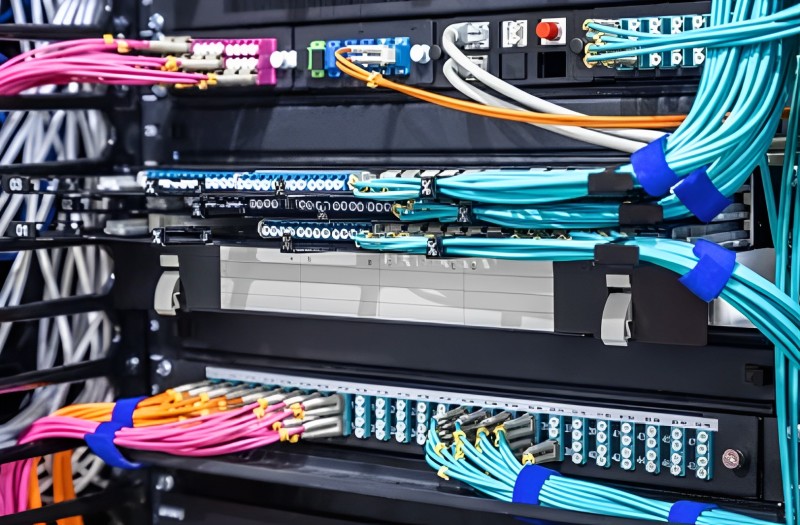
1. Off-site Preparation Before Fiber Cable Jumping:
- Work Approach: Define the purpose of jumping fiber patch cables, identify the device requiring connection, determine the interface used, specify the type of fiber patch cord needed, check for optical module requirements, and gather any other necessary tools or equipment in advance.
- Tools: Prepare tools such as an optical power meter (including test patch cord), red light pen, tube sleeve, labels, oil pen, notepad, pliers, and electrical tape.
- Materials: Depending on the requirements, gather the required quantity, type, or length of optical fiber patch cords, optical modules, and corresponding materials.
- Disk Information Preparation: Understand the disk information in the equipment room, especially when connecting different equipment rooms, and record it in a notepad.
2. Considerations Outside the Site Before Fiber Patch Cable Jumping:
- Ensure attention to details such as the type, distance, wavelength, and other parameters if an optical module is needed.
- Pay attention to the type and length of the fiber core interface, cabinet spacing, the need for cabinet spanning, and the use of a distribution frame.
- Always have spare optical modules and fiber patch cords – at least one spare optical module and a pair of optical fiber patch cords must be readily available.
3. On-site Preparation Before Fiber Patch Cable Jumping:
- Untie the fiber patch cable tail band, expand the patch cable tails, and tie the two optical fiber patch cords together with electrical tape once fully expanded.
- When connecting fiber cores in different equipment rooms, communicate with colleagues in the remote equipment room to test functionality. For devices within the equipment room, connect related devices to ensure proper functionality.
- Use a notepad to document the serial number, length, and type of the fiber core of the module to be used for asset management.
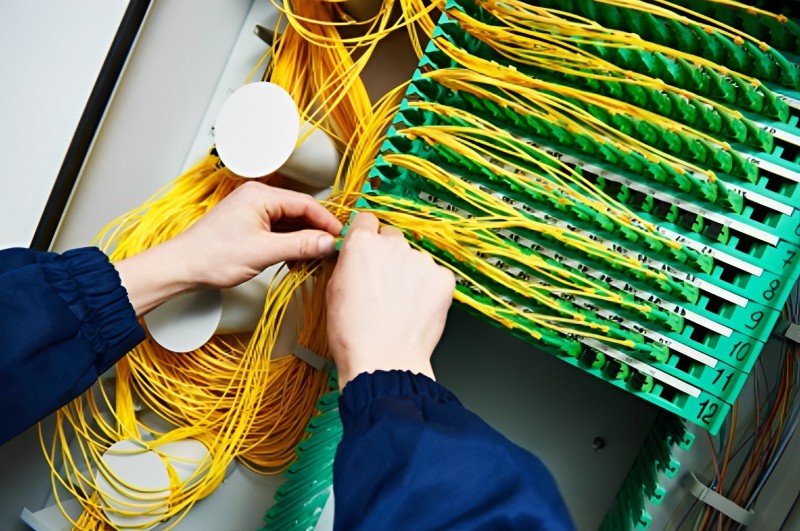
4. Field Precautions in Jumping Fiber Patch Cable:
- Consider three scenarios: one cabinet, adjacent cabinets, and inter-cabinet patch cords. Protect the fiber tail by using a sleeve when crossing the cabinet, and use a distribution frame if available.
- Connect one end of the fiber tail core to the device, route the other end through the left side facing the cabinet, wrap the extra fiber tail into a circle, and secure it with electrical tape. Connect the other end to the device or ODF frame, ensuring no wire flying occurs.
- Affix label paper after jumping the fiber core and label it according to naming requirements.
- Register the use of ODF core after labeling, recording details in a notepad if the main core is connected.
- Collect protective caps of the module and fiber tail, placing them in a small box at the bottom of the cabinet for future use.
5. Completion Steps After Jumping Fiber Patch Cable:
Before leaving the equipment room:
- Contact relevant colleagues to test fiber core connectivity and confirm work completion.
- After confirming successful completion, organize onsite tools, and clean up any debris, such as tail fiber bags, to maintain equipment room cleanliness.
- Turn off room lights, double-check for any remaining items, and lock the room door upon departure.
Conclusion
In the meticulous arrangement of optical fiber optic patch cords within the cabinet is paramount for the seamless operation of data transmission systems. By adhering to the best practices outlined in this guide, network administrators can optimize the performance of their infrastructure, minimize the risk of signal interference, and enhance the overall reliability of their communication networks.

